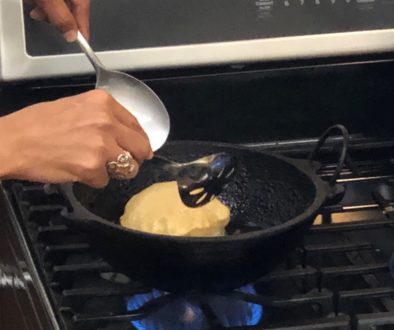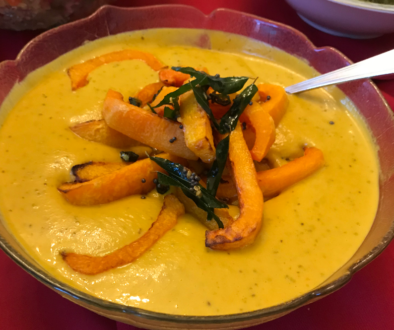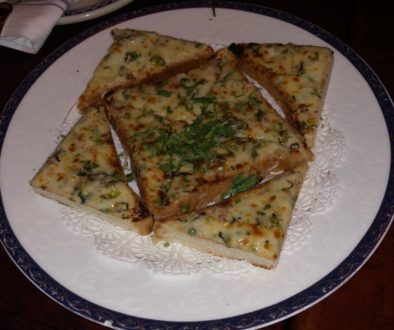Making Idlis
By Natalie Albright
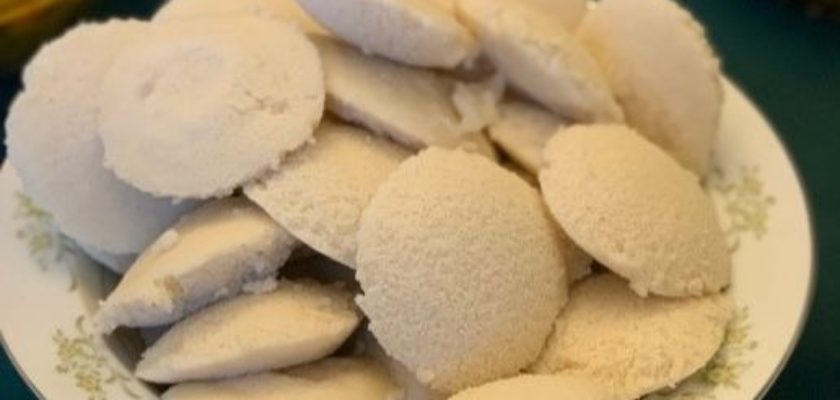
Idlis
In 2020, I began teaching an Indian food, blogging and photography class at Willliams College, Massachusetts. At each session, students prepared a protein, lentil, vegetable, and bread or rice dish. We concluded the class by sitting around a table, talking and eating all the delicious food prepared.
The class included a Jackson Heights restaurant tour and we observed two chef’s – from Drunken Munkey and Rahi – demonstrate their cooking skills. Below are some of my student’s blog posts.
Idli are a type of soft, pillowy savory rice cake originating from southern India; a gut-healthy choice often served with breakfast. They are made by steaming a batter of fermented black lentils and rice. Similar to dosas, a cooked flat thin layer made from a fermented rice batter, that also originated from southern India, they are easy to digest because the lentils are soaked, ground, and fermented. As described by Lizzie Collingham in Curry: A Tale of Cooks & Conquerors, rice was often considered a luxury in Persian cuisine. A tavernier described that “when it is cooked, snow is not whiter than it is… When you wish to make an acceptable present to any one in Persia, you take him a sack of this rice” (25). The idli has an incredibly long history, dating back to its precursor the “iddalige” in 1025 C.E. There are three basic components to the batter: the blending of rice and black lentils, the long fermentation of the batter, and the steaming to create a fluffy cake texture.
To make idli, the urad dal (black gram or lentils) are soaked for several hours. Once done soaking, the lentils are drained and ground to a fine paste, and mixed together with the idli rava in a 2:1 ratio of rice to lentils. Idli rava is coarsely ground idli rice available in stores and much easier than grinding down rice yourself. Dosas are made from a 3:1 ratio of rice to lentils. The batter is left in a warm space to rise and ferment overnight; it visibly rose to about twice its size. The next day, you stir the batter to remove all the air bubbles and allow the batter to sink in height. Upon first tasting the batter, I was shocked by the strong fermentation. It had an almost bitterness or tartness that I wasn’t expecting.
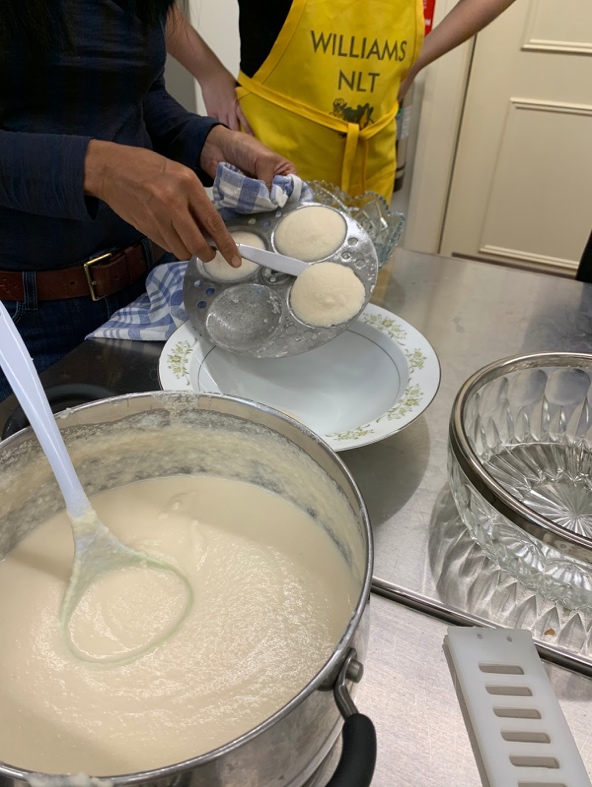
To cook, we used a special Indian steamer for idlis, that has a pressure regulator/whistle on top. I greased the molds with some peanut oil and then scooped the finished batter into the oil-greased molds, attempting to fill them just short of all the way to the top without overflowing. To make the process easier, I started with the bottom plate, then placed the next plate on top, and so on until all the plates were stacked. Once having the water boiling in the pot, I placed the stacks of idli-filled molds into the pot to steam for ten minutes.

After ten minutes of steaming, I removed the cooker from the stove and the idlis from the cooker to allow them to cool before removing from the molds. To remove, you must gently insert a knife under the idlis and slowly twist around the mold to ensure you have removed the entire cake from the bottom. The idlis should then easily fall out into a ready bowl.

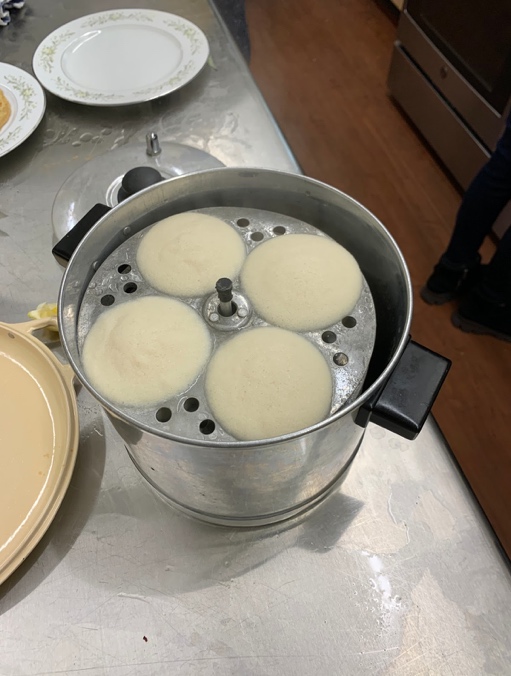
My first impression of the idlis was that they were, again, far more fermented tasting than I expected. They are mild in taste and often taste much better when eaten with other dishes.
Idli and dosa are often served with chutney or sambar. Sambar is a lentil-based vegetable stew. Chutney is considered to be a number of sauces that are served alongside an Indian meal. Examples of chutneys include a ground peanut garnish or an onion and coconut blend. For a sweet treat, you could also try the idlis with ghee and sugar. There are today a number of variations to idlis in different cultural regions. Around the world, they are beloved for their light, fluffy texture.

Natalie Albright is a senior at Williams College with a double major in Chemistry and French. She is a member of the Women’s Varsity Volleyball Team, a French peer tutor, and the Class Secretary. After graduation, Natalie plans to take two gap years working in the pharmaceutical industry before attending medical school.





